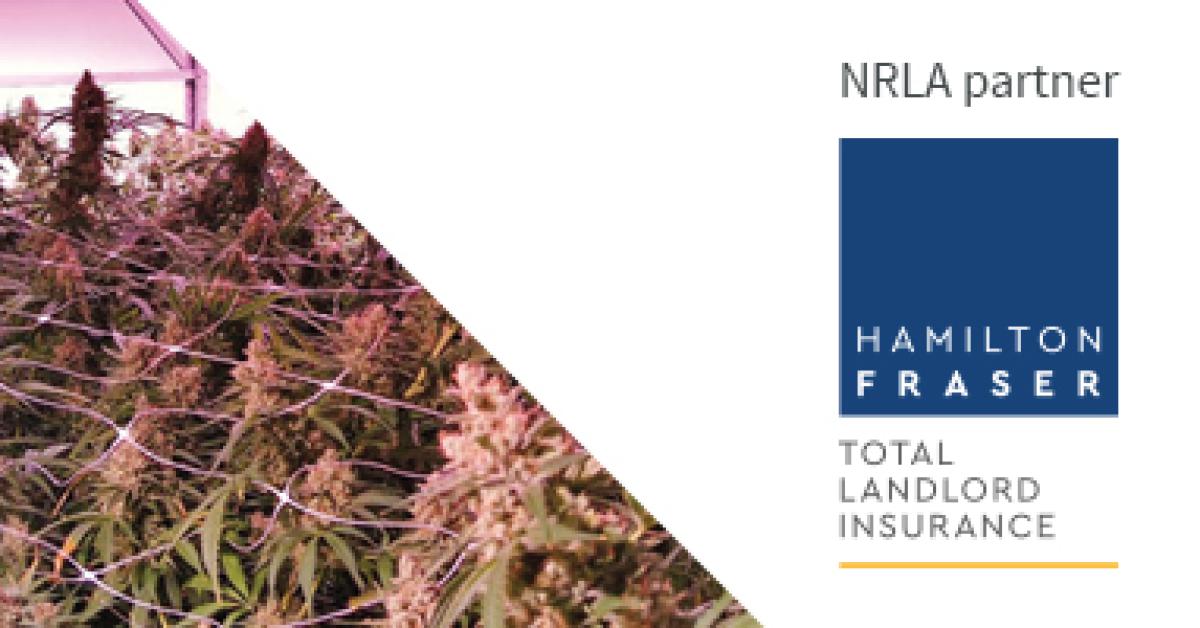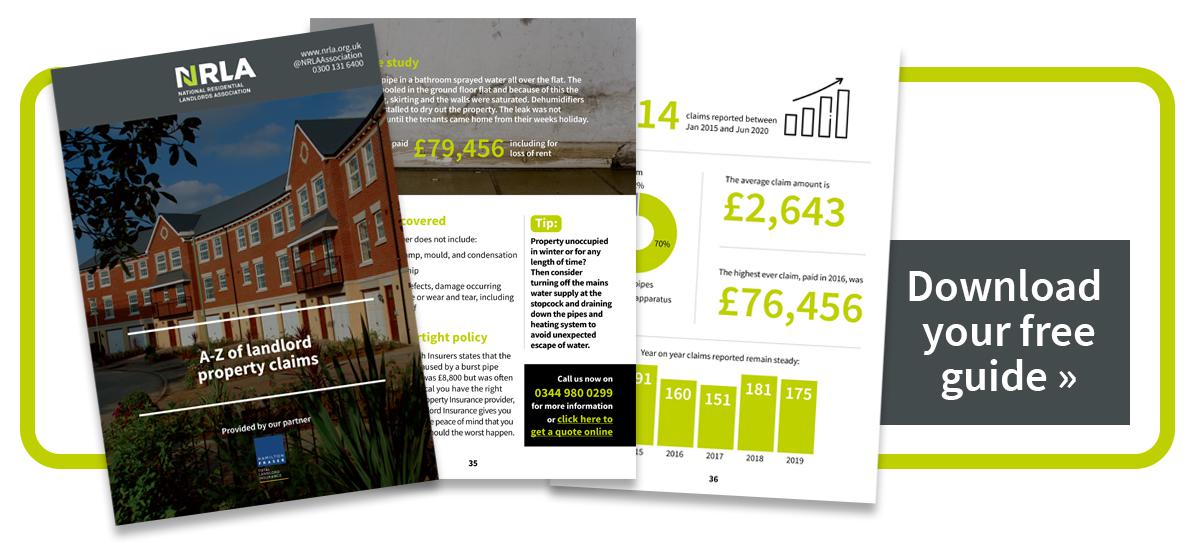

The complete guide to protecting your property from malicious damage
Although the vast majority of tenants will take good care of your rental property, it’s important as a landlord to realise that you are trusting your tenant with your most expensive asset. Even if you do all you can to minimise risk, you can never be certain that your tenant, or their guests, won’t cause damage to your property.
Disgruntled tenants have caused thousands of pounds worth of damage to rental properties, costing some landlords dearly. The highest claim for malicious damage paid out by NRLA Property Insurance provider, Hamilton Fraser Total Landlord Insurance, was £44,289, to rectify damage and for loss of rent after tenants created a cannabis factory in a rental property.
While this is an extreme case, malicious damage is on the rise, and no landlord wants to discover that their windows have been smashed or their walls daubed in graffiti
But what is the difference between accidental damage and malicious damage? What are the risks of malicious damage happening to your rental property? Who is liable for the damage? And how can you protect your property and make sure you have the cover you need if your property is damaged on purpose?
In this guide, Hamilton Fraser Total Landlord Insurance share their insights into how you can reduce your risks and offer guidance should the worst happen.

The difference between accidental damage and malicious damage
Any damage to your rental property is likely to cause some degree of stress and financial outlay, which could lead to an insurance claim. There are two main causes of damage – accidental damage and malicious damage - and it is important to know the differences between them, so that you can make sure you have adequate cover and avoid having to foot the bill if your property is damaged.
What is accidental damage?
Accidental damage is unintentional - accidents can and do happen. It could include a ball being kicked through the window, a nail being hammered through a water pipe or a tap left running unintentionally.
Landlords have to accept that accidents will happen and make sure their insurance covers accidental damage, as this is not usually offered as standard.
What is malicious damage?
Malicious damage, on the other hand, is damage caused on purpose, vandalism with intent to do harm, by either a tenant or their guests. Examples of malicious damage include smashing windows, kicking holes in doors, breaking furniture, arson and graffiti.
For malicious damage to be covered by an insurer you must be able to prove that the damage was caused with intent and that it’s been reported to the police. This means you’ll need to provide a crime reference number.
Malicious damage can be both very distressing and expensive to rectify, so it’s vital to check whether it’s included under your landlord insurance policy and take out extra protection if needed.
Malicious damage is on the rise
When weighing up the risks of someone damaging your property on purpose, it’s worth bearing in mind that malicious damage is on the rise. At Hamilton Fraser Total Landlord Insurance, claims rose by 37 per cent between 2015 and 2020 and malicious damage is one of the top three most commonly made insurance claims for landlords, with the average claim amount being £5,873.

Who is liable for damage to a rental property?
As the landlord you are legally responsible for the repair and maintenance of your property. Even if malicious damage to your property has been caused by tenants, the responsibility for fixing it will fall to you. But if your property is not returned in the same condition as it was at the beginning of the tenancy and there is evidence of damage, whether it is accidental or malicious, then you may be able to deduct costs from the tenant’s deposit. However, deductions should always allow for fair wear and tear to the property and, whilst the deposit may cover some of the damage, it is likely that the damage will cost more to repair than the deposit amount. It is, therefore, vital you have comprehensive insurance cover.
Does landlord insurance cover malicious damage?
Most malicious damage insurance policies will only cover you for damage caused by third parties who are not legally allowed to occupy the property, NOT tenants or their guests. Since tenants or ex-tenants are responsible for causing damage to a property in 31 per cent of incidents, it’s important to check your policy to see whether you’d be covered. Hamilton Fraser Total Landlord Insurance’s Premier policy offers extensive property disputes support and covers malicious damage caused by tenants and their guests; up to £5,000 for contents and £25,000 for buildings, so you’re covered for almost any eventuality.
Steve Barnes, Associate Director at Hamilton Fraser Total Landlord Insurance, explains:
“Our Premier policy offers protection against malicious damage by tenants and their guests, as well as cover for loss of rent resulting from the need to carry out repairs. But you will need to provide evidence that you did all you could to mitigate against the damage before we can pay out for a claim, For example, you will need to show that your tenant passed a full and robust reference check and that you carried out regular inspections on your property; claims won’t be paid out if landlords aren’t carrying out inspections or completing full referencing checks.”
So, while having the right insurance offers peace of mind, it’s important that you do all you can to minimise risk and protect your property against malicious damage happening in the first place.

Minimising the risk of malicious damage
As always when it comes to managing your rental property, prevention is better than cure. Fortunately there are steps you can take to reduce the chance of a tenant maliciously damaging your property.
1. Carry out a thorough reference check
Carrying out a comprehensive tenant referencing check and making sure that you or your agent meets prospective tenants before accepting them is vital. In fact, malicious damage insurance cover is generally subject to the tenant passing a full reference check. A reference check can highlight potential problems early on, so that you can either find an alternative tenant or take steps to mitigate risk, for instance asking for a guarantor.
A four-point tenant reference check is best practice and should include:
- Photographic identification (take a copy and for joint applications make sure you obtain ID from all applicants)
- A utility bill or bank statement
- A credit check to confirm that the prospective tenant is clear of county court judgements and bankruptcies, and to confirm residency
- Confirmation of employment through a written employer’s reference showing the tenant’s employment status and that their salary is at least a multiple of 2.5 of the rent
It’s also a good idea to obtain the mobile phone number of prospective tenants and make sure it’s genuine.
2. Compile a robust inventory
It’s important to be clear and transparent at the outset of a tenancy - a comprehensive and robust inventory will help to safeguard the interests of both you and your tenant should the tenancy end in a discussion over damage caused to the property. The check-in inventory (along with mid-term inspection reports) and the check-out report, will be the primary pieces of evidence for negotiating. No inventory means there is no evidence to negotiate with and makes it much harder to prove that the tenant caused the damage. Make sure check-in reports are completed before the tenant moves in and check-out reports are completed after the tenant has moved out.
The inventory should:
- List each item and area in the property along with details of its condition
- Include photo and video evidence to support written descriptions; these should be time and date stamped
- Include short but explanatory written descriptions
- Ideally be signed by the tenant. At the very least you will need to be able to evidence that the tenant received the check-in report and had the opportunity to make any amends
3. Establish a good working relationship with your tenants
If you have a good relationship with your tenants they are far more likely to treat your property with respect and report any damage to you immediately. It’s important to be attentive to your tenants and well worth taking the time to nurture the relationship from the start. It’s a good idea to:
- Be accessible by providing your tenants with clear and direct lines of contact
- Communicate clearly about your expectations and listen to your tenants
- Be understanding of your tenants’ needs
- Be reliable and deal with any issues promptly

4. Carry out routine inspections
Regular mid-term external and internal inspections of the property, as agreed with the tenant, will give you insights into how well your tenants are looking after the property. They will also help you to get a general impression of the level of wear and tear and enable you to schedule maintenance works promptly where needed. You should:
- Agree an inspection schedule when you start the tenancy
- Carry out a first inspection within a month of the tenant moving in and then once every six months, even if you have a long term tenant
- Provide at least 24 hours’ written notice of an inspection
- Agree a time of day which is convenient to the tenant, ideally when it’s light so that you can inspect the interior and exterior of the property
- Take along the inventory report so that you can compare the condition
- Keep records of inspections, including photographic evidence to show what has been identified and fixed, along with dates of every inspection
- Make sure tenants sign and date your inspection reports to agree that they’re happy with the findings
5. Ask for a security deposit
Although you don’t have to take a deposit, your tenant is arguably less likely to cause damage if their money is being held. A deposit also offers you some protection if your property is damaged. If you do take a deposit from your tenant, you are legally required to protect it in one of the government authorised schemes. Deposits are capped at five weeks’ rent where the annual rent is below £50,000 and six weeks’ rent where the annual rent is £50,000 or more.
6. Carry out regular maintenance and make sure your property is secure
If you present a neat and tidy rental property which is secure and well maintained, it is more likely that tenants and their guests will treat it with the respect it deserves. Tenants might be less inclined to look after a property that is scruffy and where repairs have not been carried out. Choose flooring and furnishings that are easy to clean and durable and consider investing in CCTV or security lights to deter vandals.
What should you do when there has been malicious damage?
Malicious damage is a crime and should be taken seriously. If, despite your best efforts, you discover that your rental property has been damaged maliciously, it’s important to take the following steps:
- Report the damage to the police and obtain a crime reference number
- Take time and date stamped photos of the damage
- Make sure the property is safe and secure
- Contact your insurers to notify them of the damage

Can you evict your tenant for causing malicious damage?
Rental property damage is recognised as a discretionary ground for evicting a tenant in England and Wales, under the Housing Act 1988 and you can serve notice on them for this reason. If your tenants do not leave by the specified date, you’ll then need to apply to the court for a possession order. The more evidence you have the better. The law in Scotland is different – the Private Residential Tenancy Act 2016 covers evictions, and although property damage isn’t one of the law’s 18 grounds for eviction, a breach of a tenancy agreement is. As with England and Wales, you must serve notice on your tenants to leave the property for this reason.
As the landlord, it’s up to you to show that you have done all you can to reduce the risks. You’ll also need to provide evidence of the steps you have taken.
Steve Barnes, Associate Director at Hamilton Fraser Total Landlord Insurance, sums up:
“Many of the issues landlords experience can be prevented through regular inspections, timely maintenance and establishing good channels of communication with your tenants.
But no matter how well prepared you are, the unexpected can still happen. This is why we recommend that you have the right insurance in place to provide comprehensive cover. With malicious damage on the rise, it’s particularly important that landlords check whether their insurance policy includes malicious damage by tenants and their guests as standard or as an extra cost. Knowing you are covered for damage, be it by theft, accident or malice, should bring you peace of mind.”
For more information on claims, Hamilton Fraser Total Landlord Insurance’s A to Z of Property Claims eBook is a practical guide, packed full of useful advice to help you understand more about claims, their causes and what your policy will and won’t cover. Download your free copy in exchange for a landlord insurance quote.



